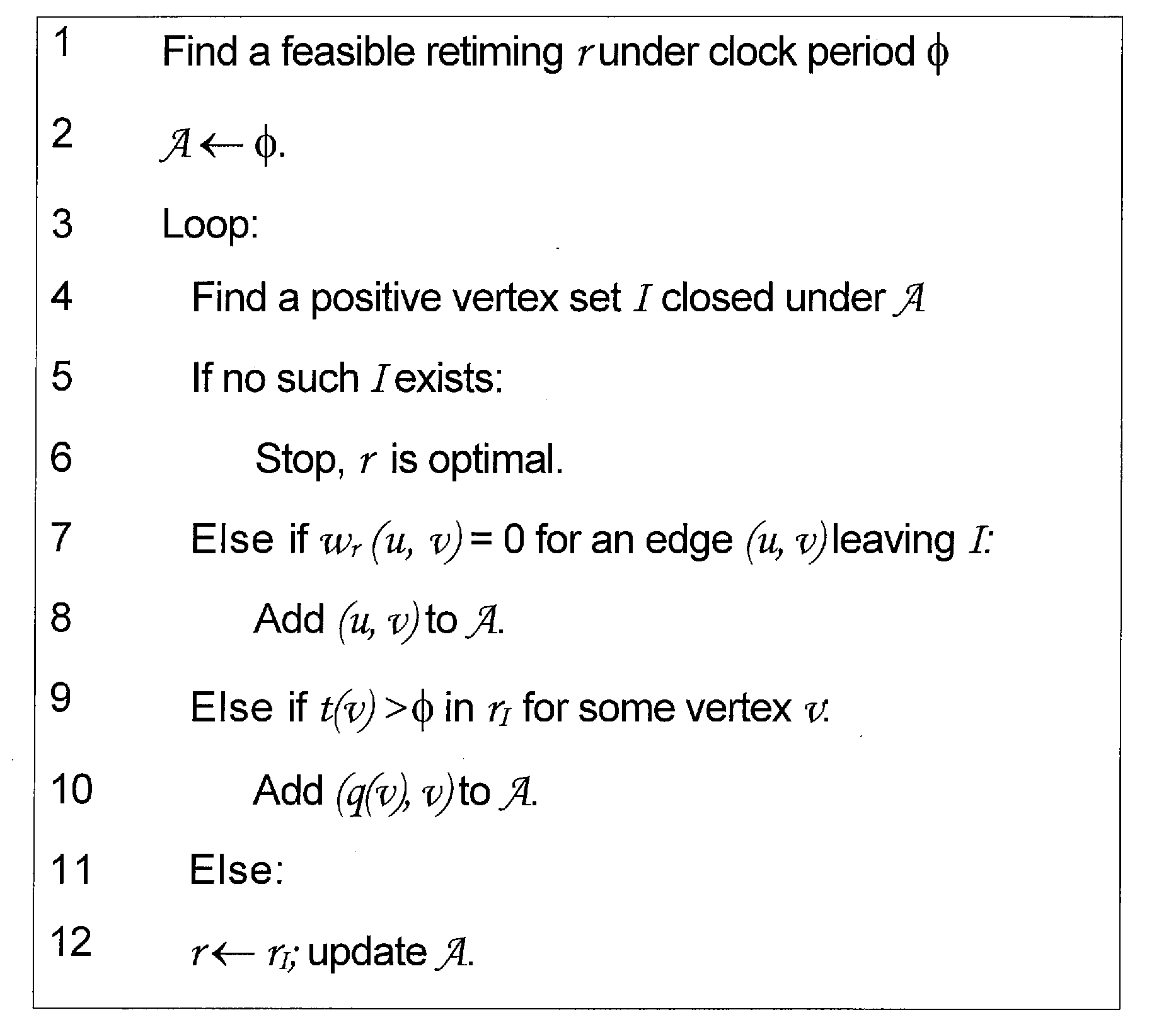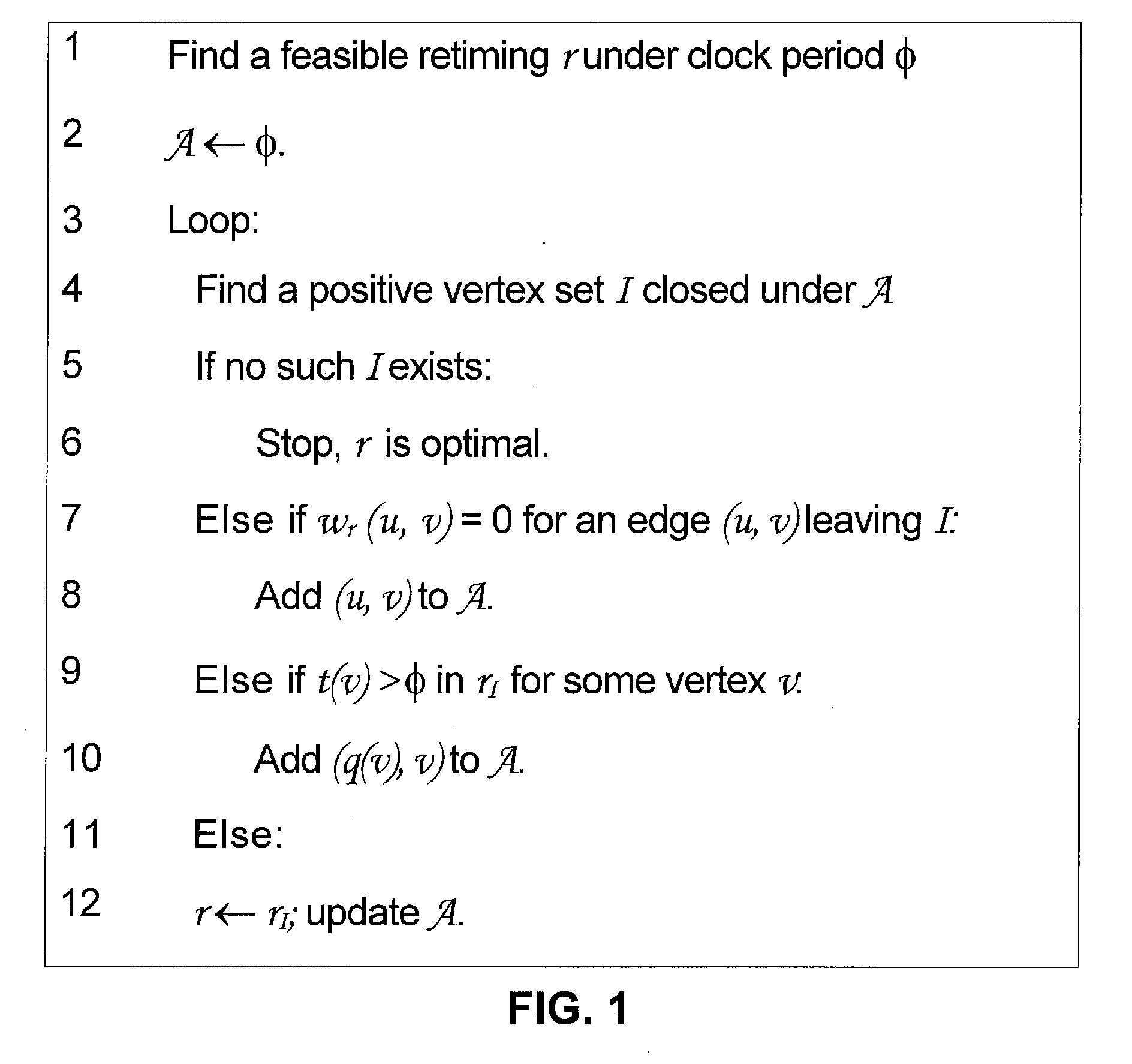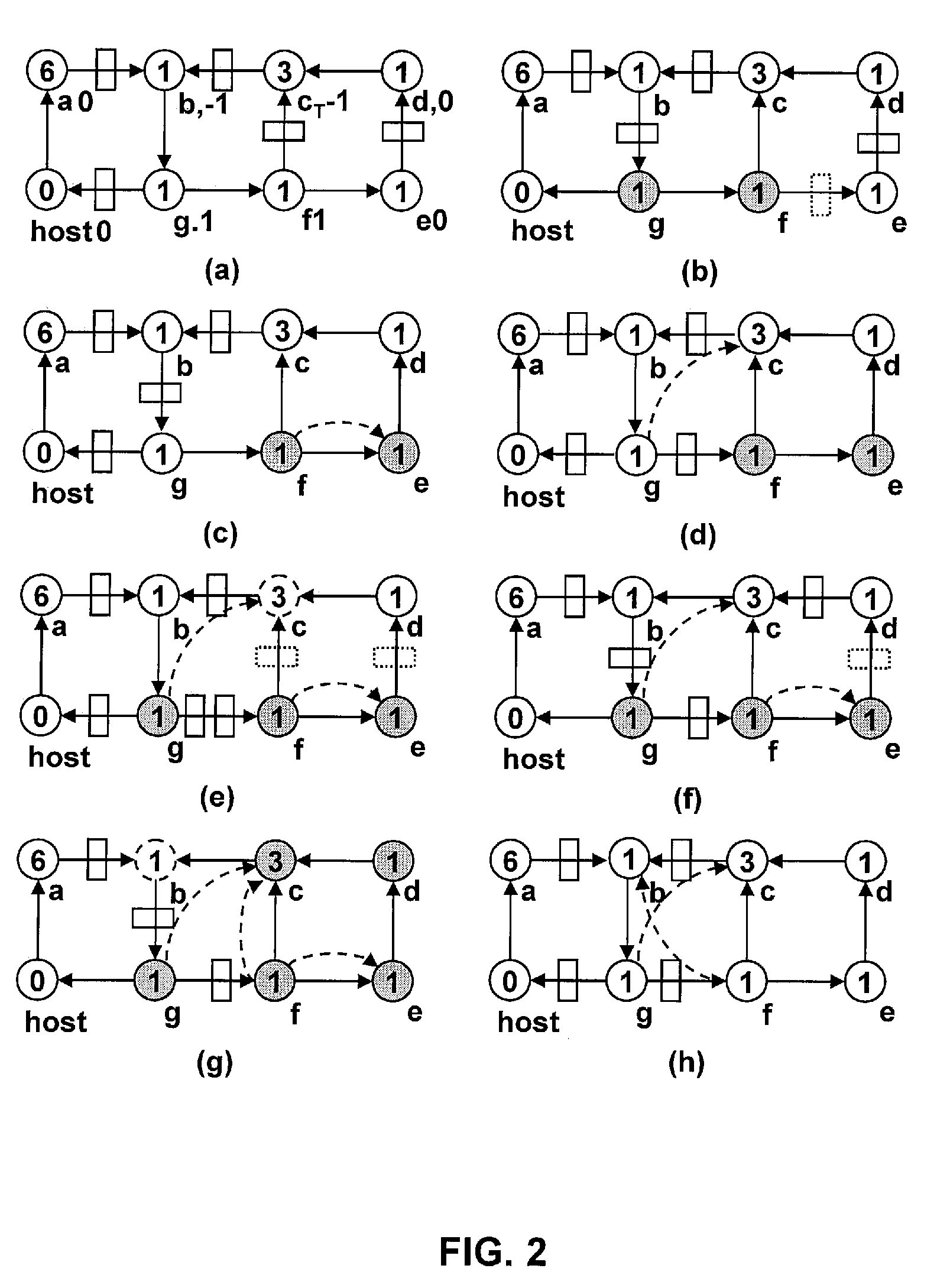System and method for efficient and optimal minimum area retiming
a technology minimum area, applied in the field of efficient and optimal retiming of minimum area, can solve the problems of high complexity, flow networks could still be very dense compared to the original circuit graph, and circuit graphs are usually expensive on large problems, so as to achieve efficient and optimal
- Summary
- Abstract
- Description
- Claims
- Application Information
AI Technical Summary
Benefits of technology
Problems solved by technology
Method used
Image
Examples
Embodiment Construction
[0020]A synchronous sequential circuit is modeled by a directed graph G=(V,E) whose vertices V represent combinational gates and whose edges E represent signals between vertices. Nonnegative gate delays are given as vertex weights d: V→R* and the nonnegative numbers of FFs on the signals are given as edge weights w′: E→N. Given such a graph, the min-area retiming problem asks for an FF relocation w′: E→N such that the total FF area in the circuit is minimized while it works under a given clock period φ.
[0021]Conventionally, to guarantee that w′ is a relocation of w, a retiming is given by a vertex labeling r: V→Z representing the number of FFs moved backward over each gate from fanouts to fanins. Given r, the FF number on the edge (u, v) after retiming is wr(u,v)=w(u,v)+r(v)−r(u). A retiming r is valid if the FF number of every edge is nonnegative,
P0(r):(∀(u,v)∈E: wr(u, v)≧0)
[0022]For a circuit to work under a given clock period φ, the maximum combinational path delay in the circuit...
PUM
 Login to View More
Login to View More Abstract
Description
Claims
Application Information
 Login to View More
Login to View More - R&D
- Intellectual Property
- Life Sciences
- Materials
- Tech Scout
- Unparalleled Data Quality
- Higher Quality Content
- 60% Fewer Hallucinations
Browse by: Latest US Patents, China's latest patents, Technical Efficacy Thesaurus, Application Domain, Technology Topic, Popular Technical Reports.
© 2025 PatSnap. All rights reserved.Legal|Privacy policy|Modern Slavery Act Transparency Statement|Sitemap|About US| Contact US: help@patsnap.com



